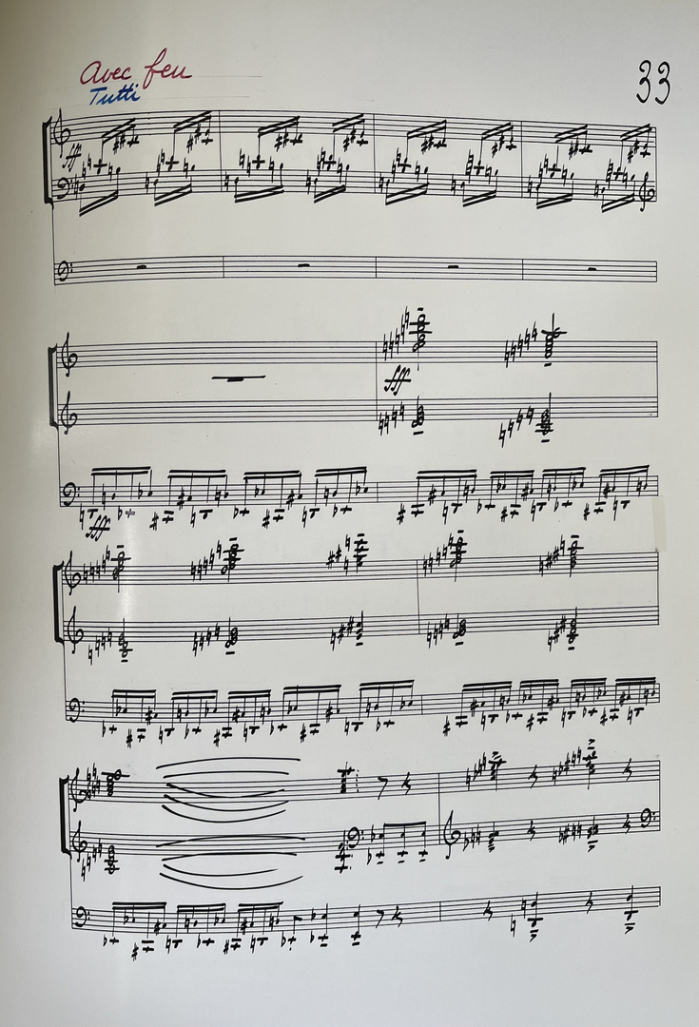
Le Tombeau d'Olivier Messiaen
Title, Duration, Place, Year, Publisher, Dedicated to, Premiere (performer(s), place, date)
LE TOMBEAU D'OLIVIER MESSIAEN, 20', Bayonne, 1993, U.M.P., à Yvonne Loriod, Naji Hakim, Inaugural Concert of the Grand-Orgue in La Trinité, Paris, 18.10.93
1) By my life, by my death
2) I give thanks to my God
3) Christ with the Holy Spirit in the Glory of the Father
In 1993 Naji Hakim succeeded Messiaen as organist at the church of La Trinite, Paris. He wrote this triptych that year and gave the first performance at his inaugral recital. It is dedicated to Messiaen's widow, Yvonne Lorriod, and in effect is an act of homage to the composer, since it draws on his musical techniques and even quotes from his works. Each piece is based on a quotation from St. Paul. The first is prefaced by two verses from the Epistle to the Philippians: 'Christ wil be honoured in my body, whether by life or by death.
For to me, to live is Christ, and to die is gain'. Life and Death are symbolised by two themes : for life a Russian folk song close to Messiaen's heart, and for death part of the plainchant for Easter Vespers, Ego Dormivi, et somnun cepi. The two themes are varied in alternation and with great force; dance-like passages are contrasted with free rhythms, and rich, saturated chords are releived by naked lines of melody. The second piece is much slower, gentler, and Hakim asks that it be played 'with love'. The quotation from St. Paul is once again from the Epistle to the Philippians: 'in all my remembrance of you, always in every prayer of mine for you, making my prayer with joy, thankful for your partnership in the gospel'. There are three sections, all based on a Maronite melody from the Lebanon, Hakim's birthplace.
In the first, the melody is played on the pedals against poignant harmonieson the swell manual, quoting from Messiaen's earlier piece, 'Les Offrandes oubliees'. The second, slightly faster section, alternates a melody on the plaintive vox humana stop with softly glowing chords typical of Messiaen's harmonic style. In the third section, curvaceous phrases of melody in double thirds are accompanied by a repeated cycle of chords articulated in a repeated rhythmic pattern of four notes, short-long-long-short. The final movement is like a vibrant, fitful toccata, with brilliant passages of rapidly alternating hands and feet. Hakim calls it an act of exalted praise to God the Holy Trinity. It is prefaced by two verses from St. Paul's Epistle to the Ephesians: 'God the Father bestowed on us his glorious grace in his Beloved; in Him we were sealed with the promised Holy Spirit'. The main theme comes from the second of Messiaen's 'Trois Petites Liturgies de la Presence Divine', which the full organ thunders out over a tightly circling bass line about halfway through the piece.
© Adrian Jack
Copyright © 2003 NajiHakim.com - All rights reserved.

